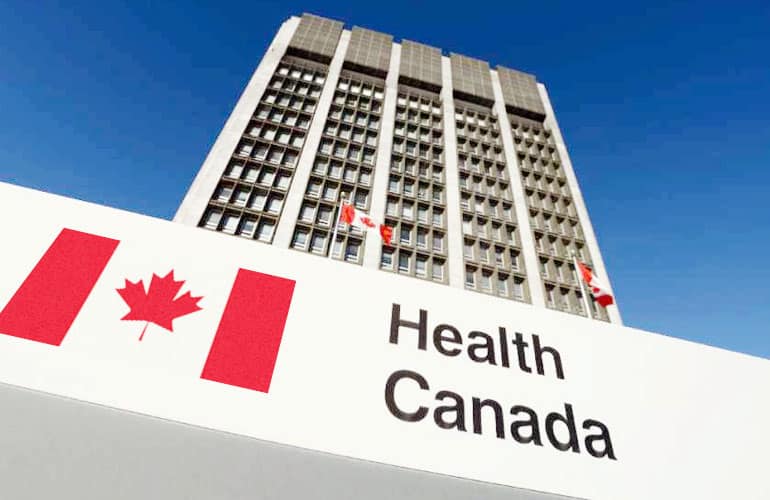Health Canada, the Canadian regulating authority in the sphere of medical devices, has published guidance on summary reports and issue-related analyses for medical devices.

Summary Reports: Additional Aspects
The present Health Canada guidance details the regulatory requirements that summary reports should meet. According to the document, such a report shall contain information about the safety and performance of a medical device collected in the course of its use. The authority emphasizes that in the case of higher-risk medical devices, the scope of information provided should be wider.
A report could contain a summary for the whole period the medical device in question is available on the Canadian market, but the conclusions provided should be based on information collected during the particular reporting period. Under the general rule, a summary report should contain information about adverse events and incidents associated with medical devices that occurred in Canada. At the same time, Health Canada encourages the parties responsible for a medical device to include information about adverse events and incidents that occurred outside Canada as well. The information provided should cover the most important aspects related to risks and benefits associated with the medical device.
As mentioned, it is allowed to submit reports using foreign formats of submission, provided that all information required under the applicable regulations is present. For instance, the Periodic Safety Update Report format adopted in the EU is also admissible.
According to the guidance, a summary report should have the following structure:
- Introduction or cover page,
- Summary of changes to the device or license,
- Analysis,
- Conclusion.
If any of the sections are not complete, the responsible party shall provide the appropriate justification.
The document also describes in detail the information each section should contain, namely:
1. Introduction or cover page should contain the date of submission, an indication of the reporting period, details of the medical device in question (including the license number, as well as references to the group, family, or group family), identifiers, details of the license holder, and also the countries whether the product in question is placed on the market.
2. Summary of changes to the device or license should describe all changes to the medical device itself or its labeling, amendment notices, recalls initiated both in the country or abroad, and also any amendments to the information provided by the medical device manufacturer.
3. Analysis should cover all safety-related issues, including adverse events and incidents, especially ones resulting in serious injury or health disorders. This section should also provide details about known facts of misuse or off-label use. The way such information should be presented depends on the nature of the device. For instance, the number of medical devices sold could be used as a reference for single-use medical devices, while in the case of multiple-use medical devices, it would be better to refer to the number of procedures conducted. The scope of data such an analysis is based on should cover both data deriving from Canada and abroad. Information about any and all safety-related notices should also be included in this section.
4. Conclusion should contain a summary of all information provided with regard to the risks and benefits associated with the medical device in question, as well as the changes thereto. This section should also contain information about the safety preventive and corrective actions performed by the party responsible for the medical device in order to address the risks and mitigate consequences.
In general, the authority states that a summary report shall provide a detailed enough analysis of the risks associated with the medical device, especially ones related to changes made to the medical device within the reporting period.

Notification Obligations
Health Canada states that the summary report described herein should only be submitted if there were changes to the benefits and risks associated with the medical device in question. According to the applicable regulatory requirements, the party responsible for a medical device placed on the Canadian market shall duly notify the regulating authority about changes to the risks and benefits associated with the medical device not later than 72 hours after the change. In order to fulfill its obligations described above, a party responsible for a medical device can:
- Apply for the amendment to a medical device license,
- Initiate a recall,
- Submit a summary report.
The authority also mentions that it is entitled to request the responsible entity to provide the information used to prepare the summary report at any time. Such information, as well as the summary reports themselves, should be kept by the responsible party for seven years.

Another important aspect covered by the guidance is related to the issue-related analyses of safety and effectiveness the party responsible for a medical device shall provide in accordance with the applicable regulatory requirements. According to the aforementioned requirements, the regulating authority is entitled to request the medical device manufacturer (irrespectively of the class of a medical device under the risk-based classification) to provide a detailed report covering aspects related to the safety and performance of the product. The appropriate request could be made at any time. Usually, Health Canada requires the medical device manufacturer to provide additional safety-related information in case it has reasonable concerns related to the safety and effectiveness of a medical device placed in the Canadian market.
According to the document, the information the authority uses to assess the post-market performance of medical devices derives from:
- Individual reports of incidents and other adverse effects,
- Scientific literature,
- Information exchange between foreign regulators,
- Other sources of information about the experiences of patients.
In the case of Class I medical devices, the party responsible for providing information about the product is the medical device manufacturer itself, while in the case of Class II-IV medical devices, the appropriate request for information would be addressed to the medical device license holder.
The present Health Canada guidance also describes the types of information to be included in an issue-related safety report. In particular, such analysis shall contain the details on:
- Device complaints and incident reports,
- Clinical data and other evidence,
- Exposure data or sales data,
- Device malfunction trends, quality issues, and results from other analyses,
- Labelling.
The first section of an issue-related analysis should contain the details on all incidents and adverse events associated with the medical device of which the responsible party is aware. The most attention should be paid to events that occurred in Canada. However, details about incidents that took place outside Canada could also be provided when reasonably necessary to describe safety-related matters. The regulating authority is also entitled to outline the particular scope of information it is expecting to receive from the responsible entity.
In summary, the present Health Canada guidance describes the regulatory requirements for summary reports and issue-related analyses for medical devices marketed in Canada. In particular, the document describes in detail the scope of information to be provided.
Specific Requirements
Aside from the general points listed hereabove, the MDA highlights some specific aspects associated with advertisements for medical devices, such as:
1. Restricted therapeutic claims. The MDA provides the list of illnesses to which the medical device could only provide relief of its symptoms. Hence, any medical device should not be marketed as a product providing treatment for such diseases.
2. Ageing-related claims. It is also prohibited to make claims related to the effects caused by the device in the context of aging and premature aging. According to the document, the physiological aging processes can not be impacted by a medical device to a significant extent.
3. The Brain and its functions. The medical device manufacturer shall not make claims with regard to the impact the device causes on the operations of the brain or memory. A medical device should not be promoted as providing improvement of brain operations and performance.
4. Immunity and other claims the advertisement should not refer to. The list of restricted claims also includes claims stating that a medical device can improve immunity against specific diseases, reduce stress, improve performance in sports, or provide weight management.
5. Device-specific claims. According to the guidance, it is explicitly prohibited to place undue emphasis on the country of origin of a medical device or its manufacturer. The same approach should be applied with regard to “natural” claims, which may be used in advertisements only if the medical device is actually composed of natural materials.
6. Novelty. It is allowed to refer to the novelty of a medical device only if it was placed on the market less than 18 months ago.
7. The authority pays special attention to the claims related to the safety of a medical device. In particular, an advertisement shall not contain any statements that the product has no side effects. All claims related to side effects should be based on the actual data.
8. References to data. Should an advertisement contain any references to statistics data, such data should be provided to the MDA upon request. It is prohibited to make references to data that cannot be validated.
9. Internet Advertising Rules. The MDA additionally outlines specific rules associated with advertising medical devices via the Internet. According to the guidance, all important information should be clearly visible. Should the advertisement be addressed to healthcare professionals only, the appropriate statement should be added as well.
In summary, the present MDA guidance describes the most important aspects associated with the advertisement of medical devices. The document covers matters related to the content of the advertisement, especially in terms of claims made with regard to the safety and effectiveness of a medical device.
How Can RegDesk Help?
RegDesk is a next-generation web-based software for medical device and IVD companies. Our cutting-edge platform uses machine learning to provide regulatory intelligence, application preparation, submission, and approvals management globally. Our clients also have access to our network of over 4000 compliance experts worldwide to obtain verification on critical questions. Applications that normally take 6 months to prepare can now be prepared within 6 days using RegDesk Dash(TM). Global expansion has never been this simple.
Sources:

